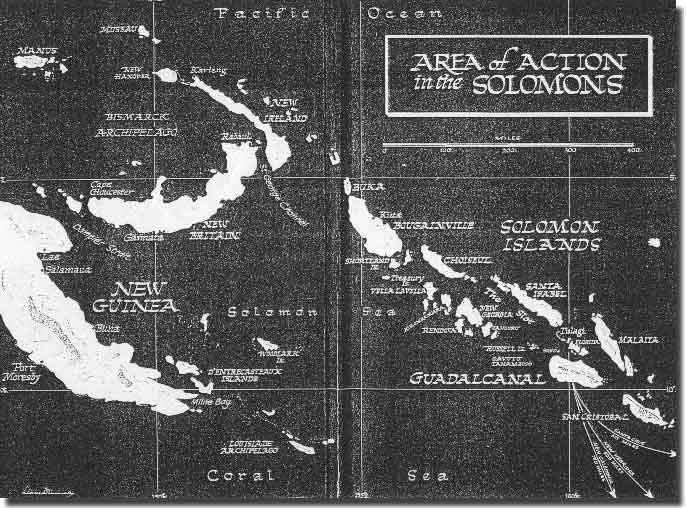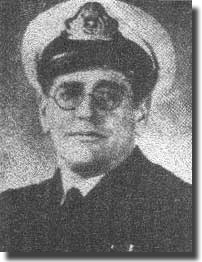|
The Lonely Vigil. Australian Coast Watching in The Pacific War.
The Lonely Vigil. Australian Coast Watching in The Pacific War. (See maps at the bottom of this page.) Introduction. He submitted, that selected civilians, on a voluntary basis, should be organised along coastal areas, to report in war time unusual or suspicious circumstances. This idea reached the Chief of Naval Staff via a Navy Office paper, with the added recommendation that the scheme embrace New Guinea, Papua and the Solomon Islands. CNS gave his approval, and the Minister of Defence, caused a committee from the three services to be formed to discuss this Navy proposal. The scheme found general approval, but it was left to the Navy to implement through their Division of Naval Intelligence. Most of the detailed work in building up the organisation fell to Walter Brooksbank, a civilian, working in the Naval Intelligence Division, at Navy Office, in Melbourne. Much of the credit is due to him for his zeal and efficiency in carrying out this work. Coast Watching Appointments. By the time War was declared on Sunday the 3rd. of September 1939, some 800 people were ready to operate this infant Coast Watching Service. Means of Communications. The Island Coast Watching Service. By the time Japan entered the war on the 7th. of December 1941, Feldt had recruited and set in place, a chain of Coast Watchers on the Islands of Rabaul, at Kavieng, and on New Ireland. Eric Feldt had, in the main selected Australians living and working in these arears, they were always independent, and recourceful men who commanded respect and loyalty from the native people. This group were responsible for obtaining and feeding intelligence and useful information into MacArthur’s Allied Intelligence network. It was soon realised that many of these people would be forced to work behind enemy lines as the Japanese would quickly invade and invest themselves into Allied Territory. To protect civilian Coast Watchers, from a charge of spying, it was necessary to commission them into one of the three Services, and many were to become Officers in the RAN Reserve. The First Enemy Sighting. On the 4th. of January 1942, Rabaul was bombed for the first time by the Japanese, Page warned of their approach, and Mackenzie at Rabaul, passed on the warning, so casualities were thankfully light. Japanese Landings. On Bouganville, outside Kieta, Lieutenants Jack Reid and Paul Mason, RANVR, used their tele radios to maintain contact with Port Moresby. By the end of February 1942, Lae and Salamaua were occupied by the Japanese , once again, one of Feldt’s front line people was in danger. Leigh Vial , had been hastily commissioned into the RAAF. as a Pilot Officer, and was flown into Salamaua only a few days ahead of the Japanese invasion. Feldt had realised he had very little time to send in Vial, before the Japanese arrived, he then chose the RAAF, to help him with a quick commission, rather than the RAN, as he believed that Naval red tape would preclude Vial joining the Navy in time to beat the Japanese. Vial set himself up in the hills overlooking the airfield at Salamaua, and, over the next 6 months he was dubbed as the “Golden Voice” by people at Port Moresby, as he passed on his warnings of impending air raids from both Lae and Salamaua. The Coast Watchers Remain. The Japanese soon came to realise the importance of this Coast Watching intelligence to the Allies, and continually tried to hunt them down, thus adding pressure to these resourceful men as they lived, worked, and moved behind enemy lines. Let me quote Eric Feldt, who sets the scene so very lucidly in his book,The Coast Watchers:
Coast Watching Chain Completed. It was Major Martin Clemens, a District Officer, and Coast Watcher, who warned Feldt of the impending problems posed by the completion of the airfield on Guadalcanal. Martin survived the war, and is living in Toorak, a suburb of Melbourne, and I see him regularly at meetings of the Naval Historical Society. America Warned. Timing was essential, King wanted the occupation of Guadalcanal brought to fruition before this airfield became operational, he could not afford the invasion force being under constant threat of attack from Japanese aircraft attacks mounted from this airfield on Guadalcanal. The Marines Arrive. We were part of the Naval Support Group covering the Marine invasion force that stormed ashore at Tulagi and Guadalcanal on the 7th. of August 1942. It was in this operational zone during the next few days, that I had first hand experience of both the efficiency and tactical value of the Coast Watching Service. The Japanese Response. Paul Mason, the Australian Coast Watcher hidden on Bouganville, South West of Kieta, had sent this warning.
The US. Destroyer Mugford was hit during this raid, and 20 of her crew died. On the 8th. of August, Jack Read, another Australian Coast Watcher, situated on the Northern end of Bouganville, gave us a warning of forty Japanese bombers flying South East.
The fleet gunners accounted for sixteen of these Betty Bombers, and, at one stage I counted six blazing aircraft as they crashed close by into the water. The US Destroyer Jarvis was torpedoed, and a transport, George F. Eliot had a blazing aircraft crash on board, she was abandoned that night, and grounded South of Florida Island. Coast Watching 1943-1944. To quote Eric Feldt:
This service had drawn its numbers from many sources, Officers and Ratings, Honourary Chief Petty Officers RANVR, from the Amalgated Wireless Association, Mrs Boye an Honourary Third Officer WRANS, Officers and Other Ranks from the Australian Army, Officers from The Royal Australian Air Force, from the British Solomon Island Protectorate Defence Force, The US Marine Corps, the US army, and Civilians. The Final Count. Recognition of Service. The real value of the Coast Watching Service to the allied cause was summed up by the appreciative words spoken by Admiral Bull Halsey USN, who said: “The intelligence signalled by Read and Mason had saved Guadalcanal, and Guadalcanal had saved the South Pacific.” The Last Verse. A Memorial, set high on the ridge of Guadalcanal, overlooking Iron Bottom Sound, that graveyard of many Allied and Japanese Naval ships, was unveiled. This granite monument, manufactured in Australia, and transported to the Solomons, honours the sacrifice of all personnel drawn from both sides of the Pacific Ocean, who fought here in those momentous days of 1942. Bibliography.


|


